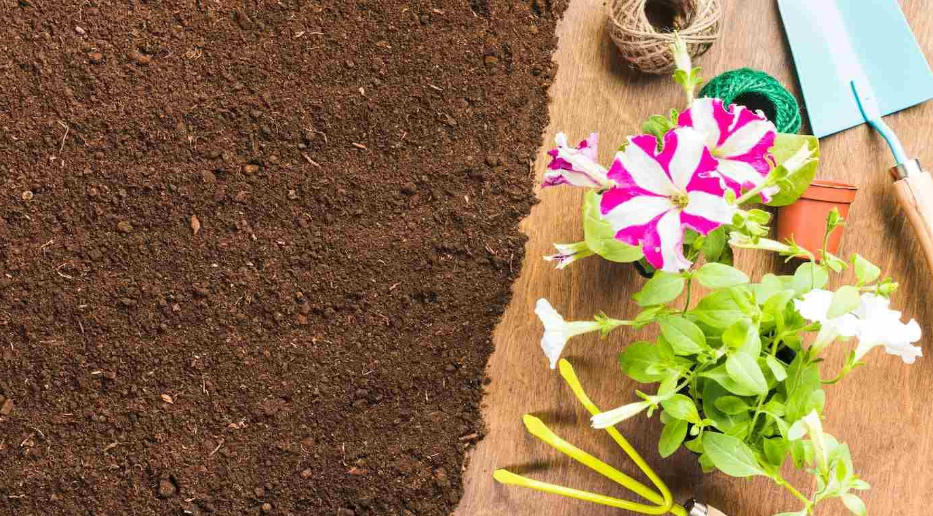Maintaining healthy Garden soil is essential to grow thriving plants and a successful garden. Start by regularly testing your soil’s pH, as this reveals important nutrient availability. Using organic matter like compost can really boost your soil’s structure and moisture retention too. It’s also wise to practice crop rotation to keep nutrients balanced while reducing pests. Applying mulch helps with moisture and weed suppression, which is pretty helpful! Remember to minimize walking on beds to avoid compaction. And don’t forget about the little guys—healthy microbes help enrich the soil! Keep an eye out for pests, so you can protect all your hard work.
1. Test Soil pH Regularly
Testing your soil pH is a key step in maintaining a healthy garden. The pH level affects how well plants can absorb nutrients. Most plants thrive in a slightly acidic to neutral range, typically between 6.0 and 7.0. If the pH is too low or too high, nutrients may become locked away, making it hard for plants to grow. Simple soil pH test kits are widely available at garden centers or online, and many local agricultural extension offices offer free testing services. For example, if your test reveals a pH of 5.5, adding lime can help raise it to a more suitable level. Keeping an eye on pH not only helps your plants but also supports beneficial soil organisms, creating a vibrant ecosystem beneath the surface.
2. Add Organic Matter to Improve Soil
Adding organic matter to your garden soil is one of the most effective ways to enhance its health. Organic matter, such as compost, well-rotted manure, or leaf mold, plays a vital role in improving soil structure. It helps create a crumbly texture that allows air and water to penetrate more easily, which is essential for root growth.
When you mix organic matter into the soil, it not only increases nutrient content but also boosts the soil’s ability to retain moisture. For instance, compost can hold moisture up to five times its weight, providing a steady supply of water to your plants during dry spells. This is particularly important in regions with fluctuating rainfall.
Incorporating organic matter can also stimulate microbial activity. Healthy microbes break down organic materials, releasing nutrients that plants can absorb. This process can significantly increase soil productivity—some studies suggest improvements of up to 30%.
You can start by layering organic matter on top of the soil and allowing it to decompose or mix it directly into the soil before planting. Not only does this practice benefit your plants, but it also helps in building a sustainable garden ecosystem. Regular addition of organic matter keeps your soil vibrant and productive, ensuring that your garden flourishes.
| Tip | Description | Benefits |
| 1. Test Soil pH | Regularly measure the pH with kits or local services. | Understanding nutrient availability. |
| 2. Add Organic Matter | Incorporate compost, manure, or leaf mold. | Improves soil structure, nutrient content, and moisture retention. |
| 3. Practice Crop Rotation | Rotate different crops to balance soil nutrients and prevent pests. | Prevents soil depletion and reduces disease accumulation. |
| 4. Use Mulch | Apply 2-4 inches of organic mulch around plants. | Retains moisture, suppresses weeds, and improves soil structure. |
| 5. Minimize Soil Compaction | Avoid walking on garden beds and use paths. | Enhances root growth and water infiltration. |
| 6. Incorporate Cover Crops | Plant clover or rye in the off-season. | Enhances fertility, reduces erosion, and improves structure. |
| 7. Water Wisely | Use deep, infrequent watering methods. | Encourages deep root growth and conserves water. |
| 8. Limit Chemical Fertilizers | Opt for slow-release organic fertilizers. | Prevents nutrient imbalances and soil degradation. |
| 9. Encourage Soil Microbes | Minimize tillage and add organic matter. | Promotes a diverse and thriving microbial community. |
| 10. Monitor for Pests and Diseases | Regular checks for pests and diseases. | Early detection helps maintain soil health. |
3. Practice Crop Rotation for Balance
Crop rotation is a simple yet effective practice that helps maintain the health of your garden soil. By changing the types of crops grown in a specific area each season, you prevent soil depletion. For instance, if you plant legumes, like beans or peas, in one season, they enrich the soil with nitrogen. The following season, you might plant a heavy feeder, such as tomatoes or corn, which benefits from the added nutrients. This cycle not only sustains soil fertility but also disrupts the life cycles of pests and diseases that can accumulate in the soil over time. A well-planned rotation can significantly enhance the resilience of your garden, making it more productive and less prone to issues.
4. Use Mulch for Moisture Retention
Using mulch in your garden is a smart way to keep your soil moist and healthy. Organic mulches, like wood chips, straw, or shredded leaves, create a protective layer over the soil. This not only helps to retain moisture by reducing evaporation but also keeps the soil temperature stable, which is vital for plant roots. A layer of 2-4 inches is ideal; too thin won’t provide enough benefits, while too thick can smother plants.
As the mulch breaks down, it adds organic matter to your soil, enhancing its structure and nutrient content. For instance, placing straw around vegetable plants not only helps them retain water during hot summers but also suppresses weeds that compete for nutrients and water. By integrating mulch into your gardening routine, you create a healthier environment for your plants to thrive.
- Helps retain soil moisture and reduces evaporation
- Suppresses weeds effectively
- Improves soil structure over time
- Adds organic matter as it breaks down
- Regulates soil temperature
- Reduces erosion during heavy rain
- Attracts beneficial insects and encourages biodiversity
5. Minimize Soil Compaction Effectively
Soil compaction can be a gardener’s worst enemy. When soil gets compacted, it becomes dense and hard, making it difficult for roots to penetrate and for water to soak in. To keep your soil light and fluffy, avoid walking on garden beds. Instead, create designated paths that you stick to while tending to your plants. Using tools like raised beds can also help. These beds elevate the soil, reducing the risk of compaction and making it easier for roots to spread out. If you need to work on compacted areas, consider using a garden fork to gently aerate the soil. This helps restore its structure and encourages better air and water movement. Regularly practicing these techniques can lead to healthier plants and a more vibrant garden.
6. Incorporate Cover Crops in Off-Season
Cover crops, like clover, rye, or vetch, play a vital role in maintaining healthy garden soil, especially during the off-season. These plants, sown in late summer or fall, cover the soil when main crops are not growing. They help prevent soil erosion by shielding the surface from wind and rain. Furthermore, as these crops grow, they can fix nitrogen in the soil, enhancing fertility naturally. When you till these cover crops back into the soil before planting your main crops, they break down and contribute organic matter, improving soil structure and moisture retention. This practice not only enriches the soil but also suppresses weeds and creates a habitat for beneficial insects. For example, planting a mix of clover and rye can boost soil health while providing food for pollinators. Incorporating cover crops is a simple yet effective strategy to ensure your soil remains productive year after year.
7. Water Wisely for Deep Roots
Watering your garden correctly is essential for promoting deep root growth. Instead of frequent shallow watering, aim for deep, infrequent watering. This approach encourages plants to develop strong, resilient root systems that can access nutrients and moisture from deeper soil layers. For example, using a drip irrigation system can be an effective way to deliver water directly to the roots while minimizing evaporation. Ideally, your garden should receive about 1 inch of water per week, either from rainfall or supplementary watering. Monitoring the soil moisture level can help you determine when to water, allowing you to adjust based on the season and plant needs. This method not only conserves water but also fosters healthier plants that are better able to withstand dry spells. Products like Graf Rain Barrels and Water Harvesting Products can further support these efforts by capturing and storing rainwater for efficient reuse.
8. Limit Chemical Fertilizers Usage
Using chemical fertilizers can seem like a quick fix for nutrient deficiencies, but over time, they can harm your soil. These fertilizers often lead to nutrient imbalances, which can negatively affect plant health and soil structure. Excessive use can also result in runoff, polluting waterways and disrupting local ecosystems. Instead, consider slow-release organic fertilizers like bone meal or fish emulsion. These options provide a more balanced nutrient supply and promote a healthier soil environment. For instance, using compost as a fertilizer not only feeds your plants but also improves soil texture and microbial activity. By limiting chemical fertilizers, you’re investing in the long-term health of your garden soil.
9. Encourage Diverse Soil Microbes
Soil health relies heavily on the presence of diverse microorganisms, which play a crucial role in nutrient cycling and soil structure. To foster a vibrant microbial community, it’s important to adopt practices that support their growth. For instance, minimizing tillage preserves the natural habitat of these beneficial microbes, allowing them to thrive. Additionally, incorporating organic matter like compost or mulch not only provides food for these organisms but also enhances soil aeration and moisture retention. You can think of this as creating a thriving ecosystem within your garden. A healthy mix of bacteria, fungi, and other microbes can lead to improved soil fertility and resilience against disease. For example, mycorrhizal fungi form a symbiotic relationship with plant roots, helping them absorb water and essential nutrients. By nurturing these tiny allies, you contribute to a more balanced and productive garden.
10. Monitor for Pests and Diseases
Keeping an eye out for pests and diseases is essential for maintaining healthy garden soil. Regular inspections can help you catch issues early, before they escalate. Look for unusual signs such as discolored leaves, wilting plants, or insect activity. For instance, aphids can quickly multiply and weaken plants, while fungal diseases like root rot can linger in the soil, affecting future crops. Implementing integrated pest management (IPM) methods can help control these threats. This might include introducing beneficial insects, like ladybugs, or using organic sprays when necessary. By staying vigilant, you protect not just your plants but also the soil ecosystem that supports them.
Frequently Asked Questions
1. What nutrients does healthy garden soil need?
Healthy garden soil needs a mix of nutrients, like nitrogen, phosphorus, and potassium. These help plants grow strong and healthy.
2. How can I tell if my soil is healthy?
You can check your soil by looking at its color, texture, and moisture. Healthy soil is dark, crumbly, and holds moisture without being soggy.
3. Why is soil pH important for my garden?
Soil pH affects how well plants can absorb nutrients. Most plants prefer a slightly acidic to neutral pH, around 6 to 7.
4. What is compost, and how does it help soil health?
Compost is made from decomposed organic matter, like kitchen scraps and yard waste. It enriches the soil, adds nutrients, and improves its structure.
5. How can I improve drainage in my garden soil?
You can improve drainage by adding organic matter, like compost or peat moss, and by creating raised beds to help excess water flow away.
TL;DR Maintaining healthy garden soil is essential for thriving plants. Regularly test soil pH and add organic matter such as compost to improve nutrients and moisture retention. Practice crop rotation, use mulch, and minimize soil compaction to enhance soil structure. Incorporate cover crops in the off-season, water wisely to encourage deep roots, and limit chemical fertilizers to promote soil health. Encourage diverse soil microbes and monitor for pests and diseases to maintain a productive garden.





